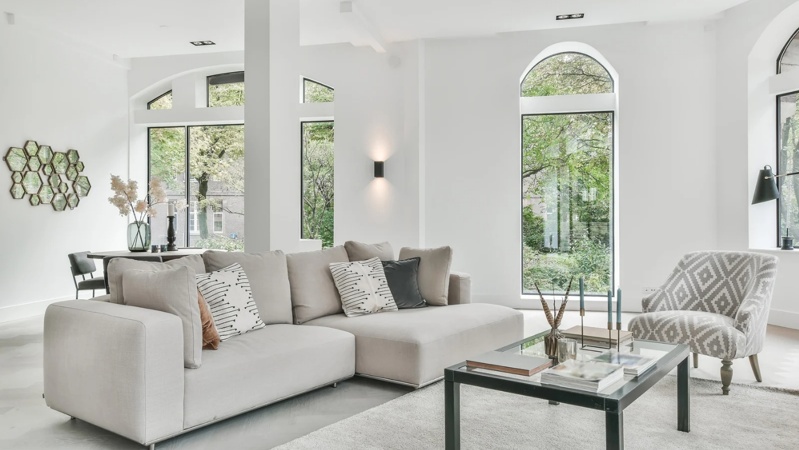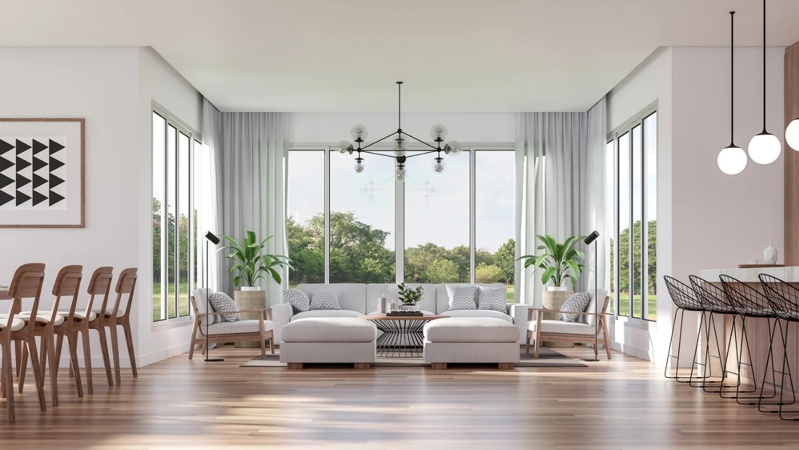White walls are like a blank canvas for your home. They have become a common presence nowadays because they bring a sense of simplicity and style that never gets old.
When you walk into a room with white walls, it just feels fresh and inviting. But what exactly makes white so popular?
Let us delve deeper, and show you the multitude of reasons that contribute to the reason why white walls are still a hit in contemporary spaces.
Why is White a Good Color for Walls?
Perhaps the most fundamental advantage of white walls lies in their ability to manipulate the perception of space. White is a highly reflective color, simply put; it bounces back a significant amount of light that enters a room.
This translates to a brighter, airier feel, particularly beneficial in smaller rooms or those with limited natural light. The expansive quality of white creates an illusion of greater depth and height, making even compact or smaller spaces feel more open and inviting.

A Blank Canvas for Creativity: Showcasing Your Style
Modern design often embraces minimalism and a focus on clean lines. White walls serve as the perfect backdrop for this aesthetic, providing a neutral canvas that allows other design elements to take center stage.
Furniture, artwork, and pops of color become the focal points, unhindered by competing colors on the walls. This versatility empowers homeowners to express their unique personalities and styles through their choice of furnishings and décor.
Whether it’s a collection of vibrant paintings, a statement sofa, or a minimalist arrangement of sculptures, white walls provide the perfect platform for self-expression.
Timeless Classic That Endures
Fads come and go in the world of interior design, but white walls have a remarkable ability to transcend trends. Their neutral character ensures they remain relevant regardless of the prevailing styles.
This longevity makes white walls a safe choice for homeowners who don’t want to repaint every few years to keep up with the latest trends. Instead, they can update their décor with minimal effort, being confident that the backdrop will remain timeless.

Calm, Tranquility and Relaxation of a white Space
The psychological impact of color cannot be underestimated. People usually think of white as clean, pure, and calm.
These qualities translate into a soothing and peaceful atmosphere in a room. After a long day, stepping into a space with white walls can feel like entering a sanctuary, promoting relaxation and unwinding.
This is particularly valuable in modern life, where stress levels are often high. White wall can contribute to a sense of well-being and create a haven of peace within the home.
Read Also: The Importance of Good Kitchen Layouts in Modern Homes
Adding Texture and Depth Beyond Color
While the base color may be white, modern paint technology offers a vast array of finishes that add depth and texture to walls. Flat paints provide a clean, matte look, ideal for minimalist spaces.
Eggshell and satin finishes offer a subtle sheen that adds a touch of sophistication. For a more textured look, eggshell and pearl finishes can be used. These variations allow homeowners to personalize their white walls and create a unique visual experience.
The Art of Layering: Creating Dimension with Whites and Off-Whites
The beauty of white lies in its spectrum. Modern design often utilizes a variety of whites and off-whites to create a sense of depth and visual interest.
A crisp white trim can be paired with a slightly warmer white on the walls for a subtle contrast. This layering adds dimension to a space and prevents it from feeling sterile or flat.
Designers may also use textured elements like shiplap or board and batten, painted in varying shades of white, to create a visually engaging wall treatment.
The Unifying Power of White
The popularity of white extends beyond walls. Modern homes often incorporate white elements in furniture, cabinetry, and even flooring.
This cohesive use of white creates a sense of flow and continuity throughout the space. The result is a streamlined and uncluttered aesthetic that embodies the essence of modern design.
Maintenance Considerations: Choosing the Right White
While white walls offer undeniable aesthetic advantages, it’s important to acknowledge the practicalities.
High-traffic areas or homes with pets may require a more stain-resistant paint option. Semi-gloss or even washable paints can be a good choice for these situations.
Additionally, cooler whites tend to show dirt less noticeable than warmer whites. Considering these factors during the selection process ensures that beautiful white walls remain beautiful for longer.
White Wall Used as a Foundation for Sustainable Design
The use of white wall aligns well with principles of sustainable design.
By maximizing natural light reflection, white walls reduce the need for artificial lighting, leading to lower energy consumption.
Additionally, white paint often contains lower levels of volatile organic compounds (VOCs) compared to darker colors, contributing to a healthier indoor environment.
Conclusion:
The use of white walls aligns well with principles of sustainable design, a growing trend in the real estate market.
By maximizing natural light reflection, white walls reduce the need for artificial lighting, leading to lower energy consumption.
White paint often contains lower levels of volatile organic compounds (VOCs) compared to darker colors, contributing to a healthier indoor environment.
This focus on sustainability can resonate with environmentally conscious buyers and position a property for the future.




